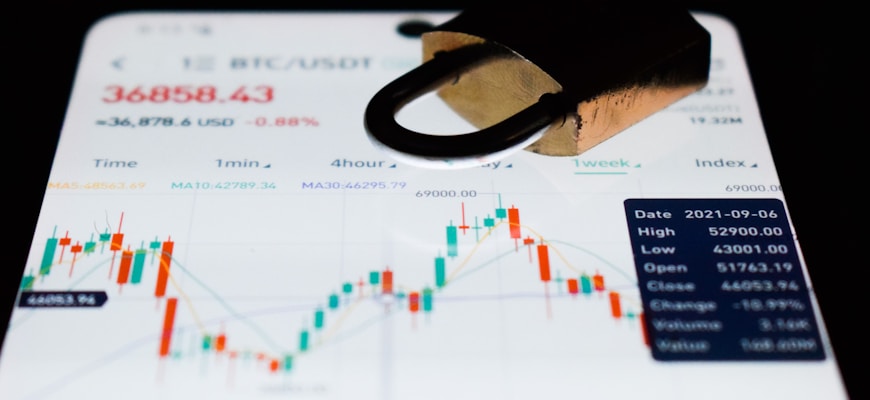Staking vs Trading: Which Strategy Offers Better Returns?

- Understanding the difference between staking and trading
- Pros and cons of staking for passive income
- Exploring the potential risks and rewards of trading cryptocurrencies
- Comparing the ROI of staking and trading in the crypto market
- Strategies for maximizing profits through staking
- Why some investors prefer staking over trading for long-term gains
Understanding the difference between staking and trading
When it comes to investing in cryptocurrencies, it’s essential to understand the difference between staking and trading. Both strategies offer the potential for returns, but they work in different ways.
Staking involves holding a cryptocurrency in a wallet to support the network’s operations. In return for staking your coins, you receive rewards in the form of additional coins. This process helps secure the blockchain and validate transactions.
On the other hand, trading involves buying and selling cryptocurrencies on an exchange to profit from price fluctuations. Traders aim to buy low and sell high to make a profit. This strategy requires active management and market analysis.
While staking offers a more passive approach to earning returns, trading can be more hands-on and require a deeper understanding of market trends. Staking is generally considered less risky than trading, as it doesn’t rely on market volatility for profits.
Ultimately, the choice between staking and trading depends on your risk tolerance, investment goals, and level of involvement in managing your assets. Some investors may prefer the steady returns of staking, while others may be drawn to the potential for higher profits through trading.
Pros and cons of staking for passive income
Staking for passive income has become increasingly popular among cryptocurrency investors looking to earn returns on their holdings. There are both advantages and disadvantages to staking, which investors should consider before deciding whether or not to pursue this strategy.
- Pros of staking:
- 1. Passive income: Staking allows investors to earn interest on their crypto holdings without actively trading.
- 2. Security: By staking their coins, investors contribute to the security and stability of the blockchain network.
- 3. Long-term rewards: Staking rewards are often higher for investors who hold their coins for an extended period.
- 4. Lower risk: Staking is generally considered less risky than trading, as investors are not subject to the volatility of the market.
- Cons of staking:
- 1. Lock-up period: Staking usually requires investors to lock up their coins for a certain period, limiting liquidity.
- 2. Limited flexibility: Investors may not be able to access their staked coins immediately in case of an emergency.
- 3. Inflation risk: Some staking protocols have inflation mechanisms that could dilute the value of staked coins over time.
- 4. Technology risk: Staking relies on the underlying blockchain technology, which could be vulnerable to hacks or technical issues.
Overall, staking can be a lucrative way to earn passive income in the crypto market, but it also comes with its own set of risks and limitations. Investors should carefully weigh the pros and cons of staking before making a decision that aligns with their investment goals and risk tolerance.
Exploring the potential risks and rewards of trading cryptocurrencies
When delving into the world of cryptocurrencies, it is essential to consider the potential risks and rewards associated with trading. Cryptocurrency trading can be highly volatile, with prices fluctuating rapidly based on market demand and other factors. This volatility can lead to significant gains, but it also comes with the risk of substantial losses.
One of the main risks of trading cryptocurrencies is market volatility. Prices can swing dramatically in a short period, leading to both opportunities and challenges for traders. Additionally, the cryptocurrency market operates 24/7, which means that prices can change even while you sleep. This constant fluctuation requires traders to stay on top of market trends and news to make informed decisions.
On the other hand, trading cryptocurrencies can also offer substantial rewards. With the right strategy and timing, traders can capitalize on price movements to generate significant profits. Additionally, the cryptocurrency market is still relatively young and growing, which means there is potential for high returns on investment. However, it is essential to approach trading with caution and to only invest what you can afford to lose.
Overall, trading cryptocurrencies can be a high-risk, high-reward endeavor. It requires careful analysis, a solid understanding of market trends, and the ability to make quick decisions. While the potential for profit is there, it is essential to remember that the market is volatile and unpredictable. As with any investment, it is crucial to do your research and consider your risk tolerance before diving into cryptocurrency trading.
Comparing the ROI of staking and trading in the crypto market
When it comes to comparing the return on investment (ROI) of staking and trading in the cryptocurrency market, it is essential to consider the various factors that can impact the profitability of each strategy. Staking involves holding cryptocurrencies in a wallet to support the network and validate transactions. In return, stakers are rewarded with additional coins as an incentive for their contribution to the network. On the other hand, trading involves buying and selling cryptocurrencies on exchanges to profit from price fluctuations.
One of the main advantages of staking is that it allows investors to earn passive income by simply holding their coins in a wallet. This can be especially beneficial for long-term investors who believe in the potential of a particular cryptocurrency project. Additionally, staking can help investors hedge against market volatility and reduce the risk of losing their initial investment.
On the other hand, trading can offer higher returns in a shorter period if done correctly. Traders can take advantage of price movements to buy low and sell high, maximizing their profits. However, trading requires a deep understanding of market trends, technical analysis, and risk management. It also involves a higher level of risk compared to staking, as the market can be highly unpredictable and volatile.
In conclusion, the choice between staking and trading ultimately depends on an investor’s risk tolerance, investment goals, and time horizon. Staking is a more conservative approach that offers steady returns over time, while trading can be more lucrative but comes with higher risks. It is essential to carefully weigh the pros and cons of each strategy before deciding which one is the best fit for your investment portfolio.
Strategies for maximizing profits through staking
When it comes to maximizing profits through staking, there are several strategies that investors can employ to increase their returns. One key strategy is to diversify your staking portfolio across multiple assets. By spreading your investments across different projects, you can reduce the risk of losses if one project underperforms.
Another important strategy is to carefully research and select the projects in which you stake your tokens. Look for projects with strong fundamentals, a solid team, and a clear roadmap for future development. By choosing projects with a strong foundation, you can increase the likelihood of earning rewards through staking.
Additionally, it’s essential to stay informed about market trends and developments in the cryptocurrency space. By keeping up to date with the latest news and events, you can make informed decisions about when to stake your tokens and when to adjust your staking strategy.
Furthermore, consider the timing of your stake. Depending on the project, staking rewards may vary over time. By strategically timing your stake, you can maximize your returns by taking advantage of periods of high rewards.
Lastly, consider using staking pools or services that offer additional benefits such as compound interest or bonus rewards. By leveraging these services, you can further increase your profits and make the most out of your staking investments.
Why some investors prefer staking over trading for long-term gains
Some investors prefer staking over trading for long-term gains due to several reasons. First, staking allows investors to earn passive income by holding their cryptocurrency in a staking wallet. This means they can potentially earn rewards without actively buying and selling assets in the volatile market. Additionally, staking is seen as a more secure way to invest as it does not involve the same level of risk as trading. Investors who stake their assets are also contributing to the security and efficiency of the blockchain network, which can lead to further rewards.
Furthermore, staking can provide investors with a sense of stability and predictability in their returns. Unlike trading, where gains and losses can fluctuate rapidly, staking rewards are often more consistent over time. This can be appealing to investors who prefer a more hands-off approach to investing and want to avoid the stress of monitoring market trends constantly. Overall, staking offers a compelling alternative to trading for investors looking for steady, long-term gains in the cryptocurrency market.



